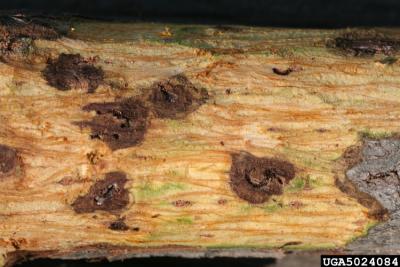
Thousand canker disease is caused by a previously unknown fungus Geosmithia morbida that is carried from tree to tree primarily by the walnut twig beetle (Pityophthorus juglandis). This beetle is native to the Southwestern United States and neighboring Mexico, where it feeds on twigs of Arizona walnut (J. major).
USFS scientists and managers developed a conservation priority-setting framework for forest tree species at risk from pest & pathogens and other threats. The Project CAPTURE (Conservation Assessment and Prioritization of Forest Trees Under Risk of Extirpation) uses FIA data and expert opinion to group tree species under threat by non-native pests into vulnerability classes and specify appropriate management and conservation strategies. The scientists prioritized 419 tree species native to the North American continent. The analysis identified 15 taxonomic groups requiring the most immediate conservation intervention because of the tree species’ exposure to an extrinsic threat, their sensitivity to the threat, and their ability to adapt to it. Each of these 15 most vulnerable species, and several additional species, should be the focus of both a comprehensive gene conservation program and a genetic resistance screening and development effort. The walnut twig beetle is not known to be a threat to any of these 15 most vulnerable species.
For full information on this pest-fungal complex, please visit our Gallery of Pests page discussing Thousand cankers disease.



